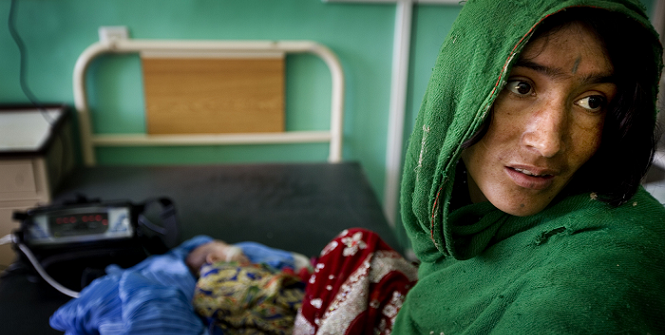Afghanistan: a Lasting War, a Forgotten Population

With armed violence creating chaos across vast parts of the world and international attention spotlighted squarely on the Middle East, the increasing misery of the Afghan people went largely unnoticed this past year.
Despite hopes that Afghanistan would emerge from generations of devastating warfare, fighting across the country has continued to escalate with 2015 marked by an intensity of violence not seen since the start of the conflict in 2001.
For organisations such as the International Committee of the Red Cross (ICRC), one of the few agencies still responding to the ongoing humanitarian fallout, it’s critical that the suffering of the Afghans is not overlooked.
Looking back at the statistics from last year, the numbers are grim. During the first month of 2015 alone, an average of nine civilians and up to 300 Afghan security personnel were killed per week. The United Nations reported a 23 percent increase in the number of civilian deaths due to the conflict between 2013 and 2014. This figure rose by another one percent in 2015.
Behind every statistic is a story of individual heartache and loss. The emotional and physical damage wrought on a population that has experienced years of conflict is appalling. Countless families have been torn apart by the insecurity, while tens of thousands of people have been killed or gravely wounded. For example, in ICRC’s physical rehabilitation clinics across the country, it’s not uncommon to see double, even triple amputees, with many of these patients the victims of weapons that simply do not discriminate.
For those 30 years or younger in Afghanistan, life has been dominated by war. And tragically – like in many other 21st century conflicts – civilians are paying the heaviest price. Last year was again marked by repeated, large-scale indiscriminate attacks against the civilian population, with warring parties blatantly violating their obligations under international humanitarian law (IHL) – the set of rules that is meant to protect civilians in war time.
With the serious consequences of this conflict on the rise, help from humanitarians is needed more than ever. But frustratingly for our teams in the field, access for aid organisations is becoming more and more complex. Working with our partner the Afghan Red Crescent Society, the ICRC makes every effort to be close to the victims of this conflict. However the prevailing security situation, coupled with the general decrease in donor funding, is limiting our ability to respond to the immense and growing needs and preventing much-needed assistance from reaching those made vulnerable by the violence.
The lack of respect for neutral, impartial humanitarian assistance is further compounding difficulties for aid organisations. The reality on the ground in Afghanistan clearly indicates that armed actors are increasingly viewing people who are assisting “enemies” (namely medical staff treating the wounded), as legitimate targets.
This dangerous attitude is reflected in our statistics collected over the past year. In 2015, the ICRC registered 20 percent more incidents against health care workers, patients and facilities than in 2014. The attack against the Médecins Sans Frontières hospital in Kunduz is one well publicised example but unfortunately this case is not an isolated incident. All too often, we hear of ambulances prevented from reaching clinics, facilities damaged by the fighting and patients and health-care staff wounded and killed, in clear violation of the laws of war. Attacks that harm medical services not only result in instant casualties, they diminish the enduring capacity of the health sector, robbing communities of safe and adequate access to future treatment.
Sadly, there are fears conditions could get even worse this year. Considering the deteriorating security situation, it’s little wonder that people are leaving their homes and seeking refuge in neighbouring countries, or attempting hazardous routes to Europe. According to the United Nations High Commissioner for Refugees, Afghans represent the second largest group among the asylum seekers and migrants arriving via the Mediterranean in a bid to make it to Europe.
As the world grapples with the many violent crises that are unfolding, it’s important that we don’t forget the people of Afghanistan. While we wait in hope for an end to this conflict, it’s critical that all those involved in the fighting better respect humanitarian law and principles, and do their utmost to protect civilians and the work of neutral, impartial aid organisations. For the war-weary population of Afghanistan, who have suffered too many years of bloodshed, this reaffirmation of humanity cannot come soon enough.
This article is part of a series by the International Committee of the Red Cross, “Lasting wars, forgotten victims,” highlighting the serious and often overlooked humanitarian consequences of protracted armed conflicts and other situations of violence.


